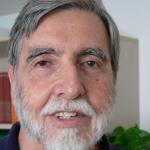Post-humans
We cannot remain indifferent to the intriguing and risky world of possibilities that opens up as a result of biology merging with technology, evolution and culture, a combination that ultimately poses serious environmental problems.

Nowadays, hearing or reading about post-humans is quite frequent.. Michel Houellebecq's imagined in his novel Les Particules élémentaires a future scenario in 2040, where humans voluntarily accepted to be replaced by asexual genetically modified humanoids meant to avoid the sex issue in the society and its dangers. A rather shocking exhibition called +Humans is open these days to the public at the CCCB, along with a cycle of related activities. According to the information available on the institution’s website , the term “post-human” refers to a set of modern characteristics such as second digital life, genetically modified foods, new generation prostheses, reproductive technologies and, I might add, artificial synthesis of human tissue and organs, genetic and epigenetic therapies or microbiome-related therapies, implants, nanotechnology and applied neuroscience.
Post-humanism has, indeed, philosophical implications: the reader may get a grasp of this idea on the Wikipedia’s definition of post-humanism. David Simpson published a science fiction best-seller entitled Post-human on the subject (already translated to Spanish at least). The Catalan Society of Biology (SCB), Barcelona, focused its opening session on the topic Humans or posthumans: what can we go with biotechnology?, with the participation of Ramon Maria Nogues and Daniel Turbón (anthropologists) and Ricard Solé (systems biologist). Previously, the Golferichs community centre offered a series of talks on the question: Human or posthuman? (October - November).
Will post-humans be more destructive or more capable to live in harmony with the rest of the biosphere than us?
The first thing that comes to a biologist’s mind is that culture can actually take the wheel of evolution. Indeed, some might argue that handling and using materials (including other organisms) and outer space in order to improve the chances of survival is an evolutionary trend that has repeatedly appeared throughout the evolution. Not only humans, but other species such as termites, bees, beavers and birds by means of their nests have taken part in this race for survival and reproduction. I discussed the meaning of some cultural innovations in biology, such as prosthetics, on my books Biografia del món and Notícies sobre evolució (both available in Spanish as well, and the latter available on line). Culture opened a tiny door to a new dimension when some animals began to use tools and it soared with humans’ evolution by conquering the entire planet and implementing a huge variety of technologies that allow producingthinking machines and drastic changes for humans. Although we have still don’t even know what actually means to be human, we are close to stopping being so.

Furthermore, many questions arise for the future. Will post-humans be more destructive or more capable to live in harmony with the rest of the biosphere than us? The Valencian El Temps latest issue (January 5th), the best weekly journal written in Catalan, contains an article about the aliens’ rights including a section about the Fermi paradox (a name given by Carl Sagan). Enrico Fermi, a Roman-born physicist with American citizenship, won the Nobel Prize in 1938 and was a member of the Manhattan Project. He was the father of the first nuclear reactor and a distinguished promoter of quantum theory, author of a scientific book with the same title adopted by Houellebecq, Elementary particles, where he formulated his famous paradox exclaiming “Where is everybody?”. The paradox raises the following question: if there are, indeed, many worlds in the Universe (30 to 300 million planets just in our galaxy) in which, potentially, they could be technologically advanced civilizations, then why do we know only one, ours? That is what Stanislaw Lem called the Cosmic Silence.
Although we have still don’t even know what actually means to be human, we are close to stopping being so.
Possible explanations are: intelligent life is much more limited than one might imagine as a result of the Drake equation; it is too far; or we are not looking for it with the appropriate indicators. Fermi, who died at age 53 of cancer from excessive exposure to radioactivity while working at Los Alamos, suggested that any advanced civilization eventually develops a technology capable of destroying itself, and this would explain the paradox... It is clear that Fermi had personal reasons for reaching this conclusion, but there is considerable literature that tries to explore alternative explanations. This shouldn’t be one of the ecologists’ endeavor. However, we cannot remain indifferent to the intriguing and risky world of possibilities that opens up as a result of biology merging with technology, evolution and culture, a combination that ultimately poses serious environmental problems.







